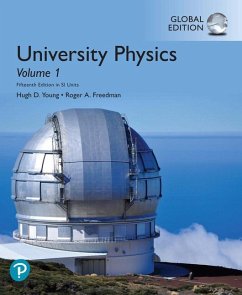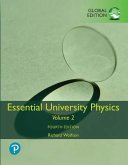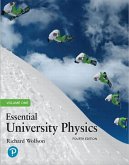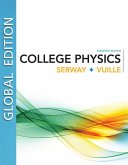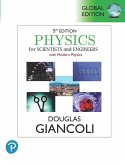This title is a Pearson Global Edition. The Editorial team at Pearson has worked closely with educators around the world to include content which is especially relevant to students outside the United States.
For courses in calculus-based physics.
Practice makes perfect: Guided practice helps students develop into expert problem solvers
Practice makes perfect. The new 15th Edition of University Physics with Modern Physics draws on a wealth of data insights from hundreds of faculty and thousands of student users to address one of the biggest challenges for students in introductory physics courses: seeing patterns and making connections between problem types. Students learn to recognize when to use similar steps in solving the same problem type and develop an understanding for problem solving approaches, rather than simply plugging in an equation.
This new edition addresses students' tendency to focus on the objects, situations, numbers, and questions posed in a problem, rather than recognizing the underlying principle or the problem's type. New Key Concept statements at the end of worked examples address this challenge by identifying the main idea used in the solution to help students recognize the underlying concepts and strategy for the given problem. New Key Example Variation Problems appear within new Guided Practice sections and group problems by type to give students practice recognizing when problems can be solved in a similar way, regardless of wording or numbers. These scaffolded problem sets help students see patterns, make connections between problems, and build confidence for tackling different problem types when exam time comes.
Pearson Mastering Physics is not included. Students, if Pearson Mastering Physics is a recommended/mandatory component of the course, please ask your instructor for the correct ISBN. Pearson Mastering Physics should only be purchased when required by an instructor. Instructors, contact your Pearson representative for more information.
Reach every student by pairing this text with Pearson Mastering Physics
Mastering(TM) is the teaching and learning platform that empowers you to reach every student. By combining trusted author content with digital tools and a flexible platform, Mastering personalizes the learning experience and improves results for each student
For courses in calculus-based physics.
Practice makes perfect: Guided practice helps students develop into expert problem solvers
Practice makes perfect. The new 15th Edition of University Physics with Modern Physics draws on a wealth of data insights from hundreds of faculty and thousands of student users to address one of the biggest challenges for students in introductory physics courses: seeing patterns and making connections between problem types. Students learn to recognize when to use similar steps in solving the same problem type and develop an understanding for problem solving approaches, rather than simply plugging in an equation.
This new edition addresses students' tendency to focus on the objects, situations, numbers, and questions posed in a problem, rather than recognizing the underlying principle or the problem's type. New Key Concept statements at the end of worked examples address this challenge by identifying the main idea used in the solution to help students recognize the underlying concepts and strategy for the given problem. New Key Example Variation Problems appear within new Guided Practice sections and group problems by type to give students practice recognizing when problems can be solved in a similar way, regardless of wording or numbers. These scaffolded problem sets help students see patterns, make connections between problems, and build confidence for tackling different problem types when exam time comes.
Pearson Mastering Physics is not included. Students, if Pearson Mastering Physics is a recommended/mandatory component of the course, please ask your instructor for the correct ISBN. Pearson Mastering Physics should only be purchased when required by an instructor. Instructors, contact your Pearson representative for more information.
Reach every student by pairing this text with Pearson Mastering Physics
Mastering(TM) is the teaching and learning platform that empowers you to reach every student. By combining trusted author content with digital tools and a flexible platform, Mastering personalizes the learning experience and improves results for each student

